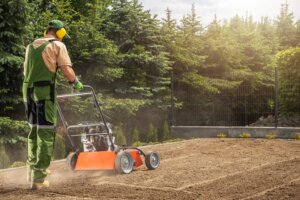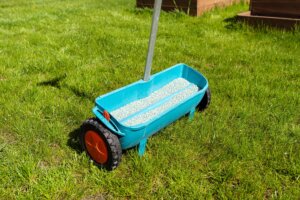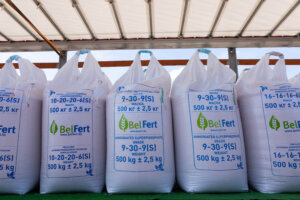As winter approaches, many lawns in the Tri-State area begin to slow growth and accumulate fallen leaves, dead grass, and debris. According to the University of Minnesota Extension, proper fall lawn care can significantly enhance your lawn’s health and resilience for the upcoming spring season. With the right winterization techniques, you can protect your turf, promote nutrient absorption, and ensure your lawn emerges healthy and vibrant when spring arrives.
At Terra Lawn Care, we guide homeowners on proper winter lawn care, including last mow practices, selecting winter fertilizers, and adjusting care based on your grass type, whether cool-season grasses or warm-season grasses typically found in milder climates. Read on for our 8 expert tips to winterize your lawn effectively.
8 Winter Lawn Care Tips at a Glance
Winterizing your lawn the right way keeps roots strong and sets you up for a healthy spring. Here are the 8 essentials to remember:
- Last Mow – Keep grass at 3–3.5″ and avoid walking on frozen blades.
- Fall Fertilization – Apply winter fertilizers to boost hardiness and store nutrients in the roots.
- Remove Leaves & Debris – Rake regularly to prevent fungus and add organic matter to weak spots.
- Pest & Weed Control – Inspect plants and use pre-emergent herbicides before winter sets in.
- Irrigation Prep – Drain all valves, check your sprinkler system, and protect against freezing.
- Soil Testing – Test nutrient levels and adjust amendments for healthy roots.
- Protect Potted Plants – Bring them inside or cover them to shield from frost.
- Timing – Begin early in the fall for cool-season grasses; keep an eye on frost and soil temperature.
Follow these steps, and your lawn will stay protected during cold months and bounce back healthy in spring.
Understanding Winter Lawn Care
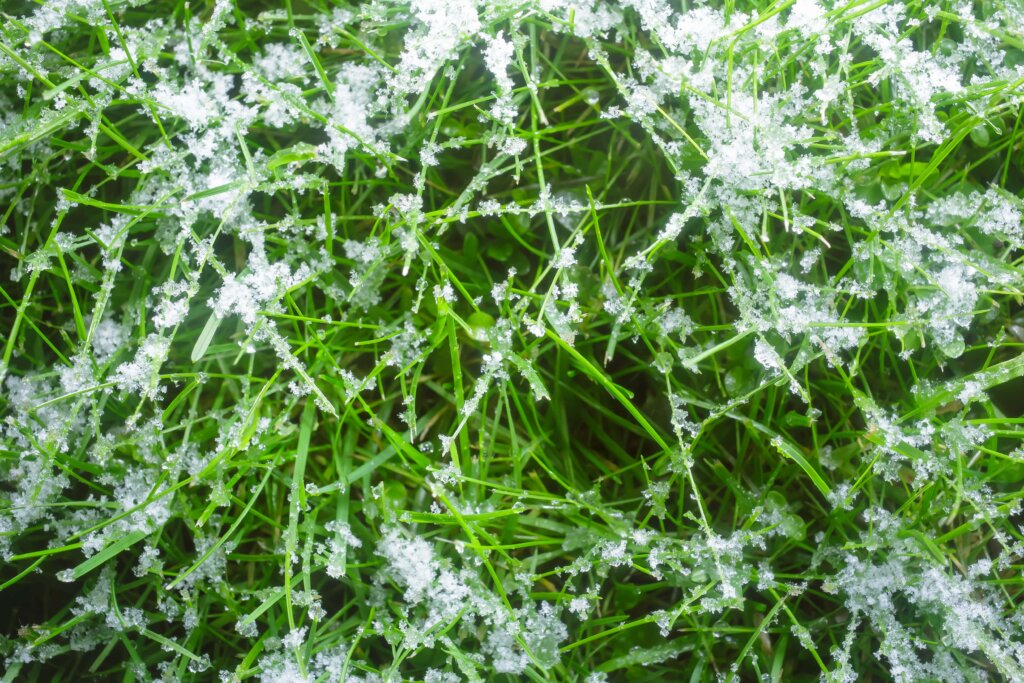
Why Winterizing Your Lawn Matters
- Promotes Healthy Roots: Proper care strengthens root systems, preparing your lawn for spring growth.
- Prevents Snow Mold and Frost Damage: Adequate winterization reduces fungal disease risk and frost injury.
- Enhances Soil Health: Maintaining soil health ensures nutrient absorption during cold months.
For additional winter lawn insights, see our guide on Preparing Lawn for Winter: Expert Tips to Protect Your Grass.
Cool Season vs. Warm Season Grasses
- Cool Season Grasses: Species like Kentucky bluegrass, fescues, and ryegrass thrive in cooler temperatures. Fertilize in early and late fall for strong root systems.
- Warm Season Grasses: Bermuda and zoysia typically go dormant in cold months. Focus on promoting healthy roots before the first frost; avoid fertilization during dormancy.
Understanding your grass type is crucial for proper winterization and long-term lawn health.
Expert Lawn Winterization Tips: 8 Essential Tips In-Depth
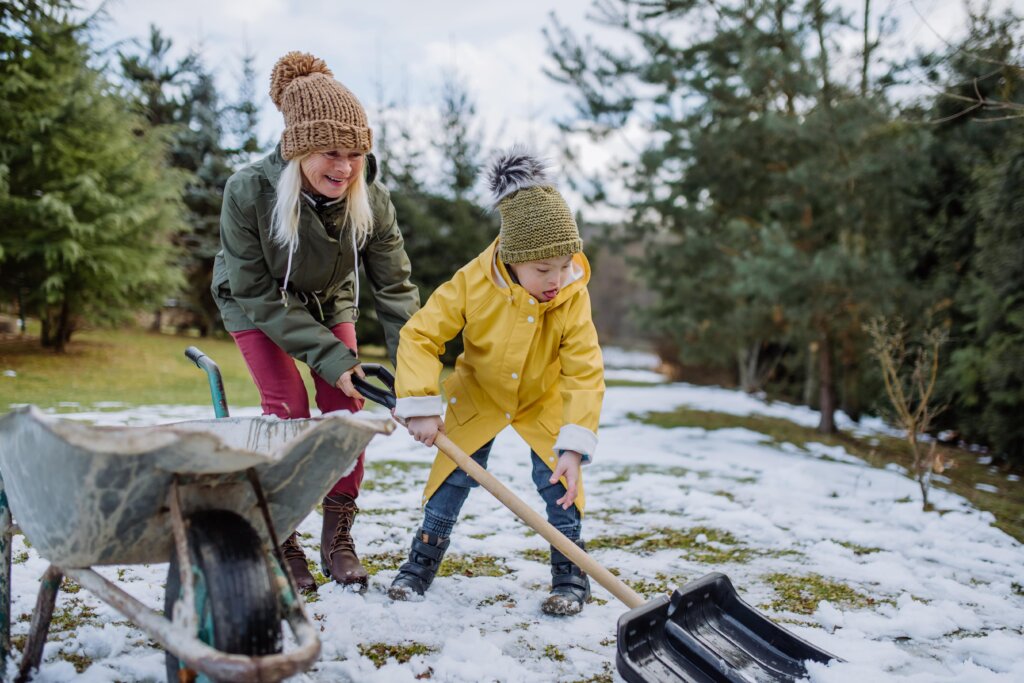
Tip 1 – Last Mow & Grass Height
- Cut cool-season lawns to 3–3.5 inches to prevent dead grass and rodent habitats.
- Avoid walking on frozen grass blades to minimize frost damage.
Tip 2 – Fall Fertilization & Winter Fertilizers
- Apply late fall fertilizer with high potassium for winter hardiness; nitrogen supports root storage.
- Adjust fertilization based on your grass type and local conditions.
Tip 3 – Remove Fallen Leaves & Debris
- Wet leaves block sunlight and create fungus breeding grounds.
- Use a wire brush or rake to remove debris and add organic matter to bare areas to promote healthy roots.
Tip 4 – Pest & Weed Control
- Inspect shrubs and potted plants for scale insects or other pest activity.
- Apply pre-emergent herbicides to control weeds before winter sets in. For more on pest prevention, check our lawn care service page.
Tip 5 – Irrigation & Sprinkler System Preparation
- Drain all valves and valve boxes, test valves, and turn off the water supply.
- Winter storage with compressed air prevents damage to irrigation systems from freezing temperatures.
Tip 6 – Soil Testing & Health Maintenance
- Conduct a soil test to measure nutrient levels and soil temperature.
- Adjust soil amendments for the entire root zone to promote healthy roots and nutrient absorption.
Tip 7 – Protect Potted Plants
- Bring potted plants inside during freezing temperatures or cover with frost cloths.
- Monitor soil moisture to prevent stress during winter storage.
Tip 8 – Early Fall & First Frost Timing
- Start winterization in early fall for cool-season grasses.
- Monitor daytime temperatures and soil temperature to prevent frost damage and snow mold.
For detailed techniques on aeration and soil preparation, see our lawn aeration page.
Additional Winter Lawn Care Considerations
Proper winter lawn care helps protect grass, soil, and irrigation systems while preventing snow mold.
| Focus Area | Action | Benefit |
|---|---|---|
| Snow Mold Prevention | Remove thick leaves; fertilize & mow | Prevents fungus, promotes grass growth |
| Irrigation & Valves | Clear drain valves & sprinkler lines; test systems | Prevents freezing damage and ensures winter storage |
| Bare Areas & Weak Spots | Reseed or add compost | Maintains healthy grass blades and strong roots |
Following these practices ensures your lawn stays healthy during the winter months and recovers quickly in spring, as explained in our snow and ice management blog.
Promote Healthy Roots & Maintain a Healthy Lawn
Regular lawn winterization ensures strong roots, reduces pest activity, and promotes healthy growth. Most homeowners in the Tri-State area schedule winter prep in early December or request a free estimate.
Following these tips will keep your lawn healthy, regardless of grass type or local climate conditions. For advanced winter preparation, also consider our artificial turf installation services for low-maintenance options.

